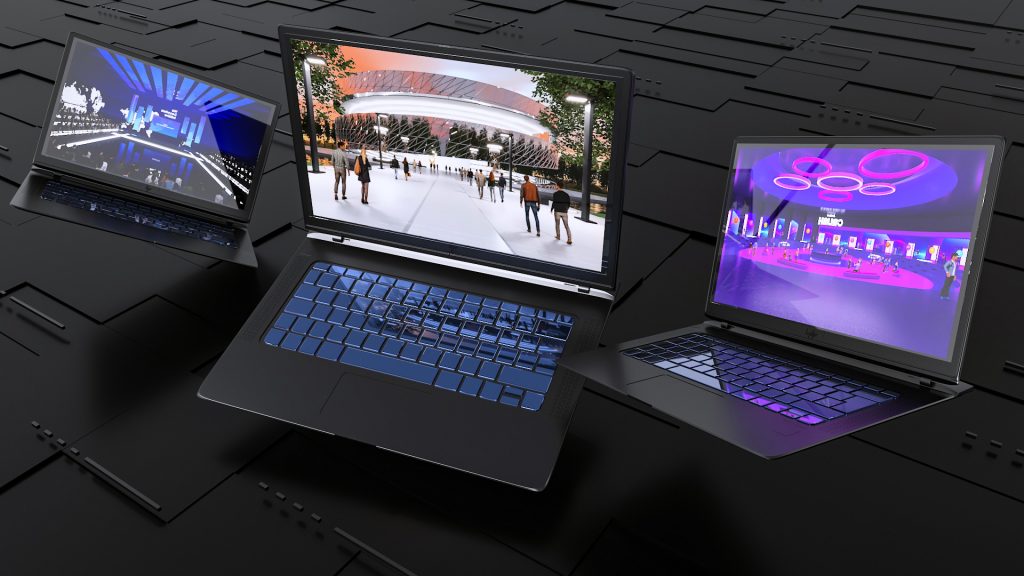
3D Virtual Environments
The digital world has evolved dramatically in recent years, ushering in a new era of creative possibilities. One of the most fascinating advancements is the art of creating immersive 3D experiences, in which virtual visions come to life with breathtaking realism and originality. In this excursion, we will dig into the fascinating world of 3D design, its applications, and the inventive tools that allow artists to bring their visions to life in unforeseen ways..
Designing a virtual environment entails building a computer-generated place that replicates a real-world setting or a fully fictional universe. Gaming, simulation, training, education, and other applications can all be carried out within virtual worlds. Here are some crucial factors to consider while developing a virtual environment:
Why Should I Use Virtual Environments?
- Purpose: The aim of the virtual environment should be well established before beginning the design process. Is it for fun or education? Is it for training or simulation? The purpose will guide the overall design of the setting.
- User Experience: The user experience should be the focus of the design process. Designers should consider how users will interact with the environment, what actions they will take, and the types of feedback they will receive.
- Interaction Design: Interaction design is critical while creating virtual environments. Designers must consider how users will engage with the surroundings and control their movements and actions.
- Visual Design: The visual design of the virtual environment must be appealing and immersive. It should incorporate a variety of visual components, such as textures, lighting, and 3D models, to provide a realistic and compelling user experience.
- Audio Design: Audio design is a vital component of virtual environments. It contributes to a sense of immersion and can improve the whole experience. The audio should be carefully developed to complement the visual aspects and purpose of the environment.
- Performance: The performance of the virtual environment is crucial. It should work smoothly and efficiently on the user’s hardware, making the experience seamless and entertaining.
- Testing and Iteration: Testing and iteration are critical components in designing virtual environments. The environment should be rigorously tested to discover any faults or bugs, and designers should be willing to make adjustments and iterate on the design in response to user feedback. So, developing a virtual environment necessitates careful consideration of numerous elements. Designers may develop engaging and immersive virtual worlds that achieve their goals by focusing on user experience, interaction design, visual and audio design, performance, and testing.
Tools that can be used to design virtual reality (VR) environments, including:
- Unreal Engine: Unreal Engine is a sophisticated game engine capable of creating virtual reality settings. It has powerful features like real-time ray tracing and photorealistic rendering, so it’s a popular choice for generating visually appealing VR experiences.
- Nvidia Omniverse: NVIDIA Omniverse is an open platform built for virtual collaboration and real-time photorealistic simulation.
- Unity: Unity, a popular gaming engine, may be used to build immersive virtual reality experiences. It offers a variety of features and tools for planning and creating virtual environments, including as 3D modelling, physics simulation, and scripting.
- Blender: Blender is a free and open-source 3D modelling software that may be used to produce content for virtual reality. It has a variety of tools for modelling, texturing, and animating objects, making it a popular choice for developing unique assets.
- 3DS Max: 3ds Max is a popular 3D modelling software for architects and interior designers. It may also be used to construct VR settings because it has a variety of tools for designing and modelling objects and locations.
- Gravity Sketch: Gravity Sketch is a VR design application that lets you build 3D creations in a virtual world. It is popular among product designers and engineers because it simplifies the building of complex models.
As a result, the tool of choice will be determined by the VR environment’s specific requirements as well as the designer’s skills. Some technologies may be better suited for producing 3D elements than others for developing interactive settings or scripting complicated interactions.
If you’re thinking of employing an animated promo for your business, we can help. At Thedigitalants, we provide a wide range of animation services and have contributed to the creation of numerous advertisements throughout the years. No matter what your requirements are, we will work closely with you from start to finish to ensure that they are met. Please contact us today, and we will be pleased to discuss your project with you.
Contact us to learn more about how Thedigitalants, a London based 3D design studio, can help you integrate 3d creative services in your B2B marketing strategy.
